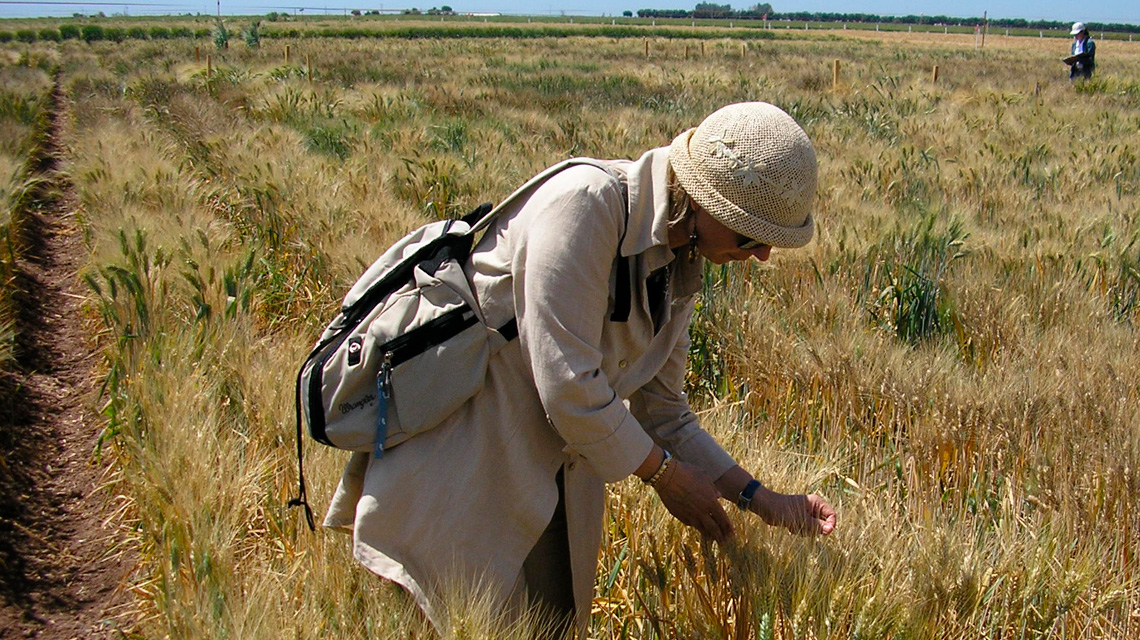Italian National Agency for New Technologies, Energy and Sustainable Economic Development

Agriculture: ENEA identifies durum wheat variety resistant to drought
An international study on durum wheat genes that 'react' to drought, coordinated by ENEA, has identified the experimental Barnacla variety as the one with the highest wheat productivity under the impact of water stress. The findings, published in the open source journal Genes, show that under reduced irrigation the Italian variety Creso has a yield approximately three times lower than with full irrigation (1.8 t/h against 5.3 t/h); under the same conditions, the Barnacla variety reacted better to water scarcity with a yield decrease of less than 50% (3.1 t/h at reduced irrigation versus 5.8 t/h at full irrigation).
"Plants activate complex genetic mechanisms to cope with environmental stresses like water scarcity, a phenomenon that occurs more and more frequently even in cold seasons, as a result of climate change" explained Patrizia Galeffi, researcher at the ENEA Sustainability, Quality and Safety of Agri-food Productions Laboratory, who coordinated the study, published in the special issue Genetics and Evolution of Abiotic Stress Tolerance in Plants[1]. “Our study has shown that there is a relationship between genes and field yeld in drought stress response of different varieties of durum wheat”.
Six different genotypes of durum wheat were used in the field experiments, three Italian commercial varieties (Duilio, Creso and Colosseo) and three genotypes – (Barnacla, AEL and Altar C84[2]) developed in Mexico by the International Center for of corn and wheat (CIMMYT[3]). Six different genotypes of durum wheat were used in the field experiments,
The collaboration between ENEA and CIMMYT began in 2003-2004 with the identification and isolation of the DRF1 gene in durum wheat which found a correlation, in case of water stress, between the gene (molecular data) and yield (agronomic data). “At first it seemed unlikely, if not impossible, to prove this relationship, but our persistence in providing growers with useful information on drought-tolerant wheat varieties was ultimately rewarded,” concluded Galeffi.
The field trial was conducted at the CIMMYT Experimental Center in Ciudad Obregón, Mexico, in topographically distant areas as they were irrigated under two different conditions: the first at full irrigation with 550-600 mm of total water supplied during the entire crop cycle and the second with a reduced regime with 220-250 mm of water distributed via a drip system. In both irrigation conditions, the plots of land were given the same agronomic treatments of both fertilization and fungicides and insecticides.
Fotogallery
Notes
[1] Collection of 10 scientific articles by over 80 international researchers on the topic of sustainable agriculture with a molecular study approach.
[2] Variety, now become commercial, with a high yield present in Mexico and other neighboring countries
[3] CIMMYT is the world's leading center for wheat and maize improvement studies and was founded in Mexico by agronomist Norman Borlaug, Nobel Peace Prize winner in 1970 for his work on plant breeding and grain productivity. Considered the father of the Green Revolution, he has actively contributed to the fight against hunger in the world. The choice of Mexico as the place to build the CIMMYT research center was not accidental, but due to the fact that the country has desert areas where it is easier to experiment with water scarcity and water stress.
